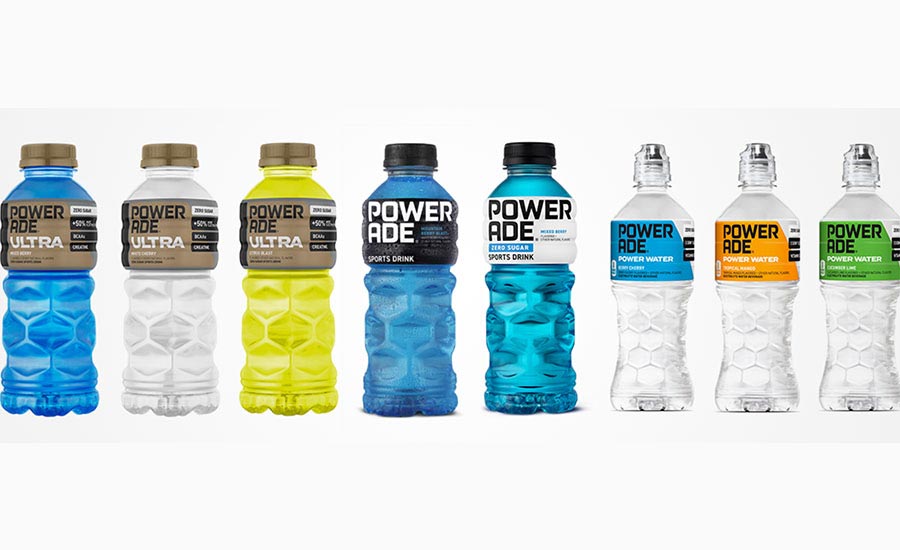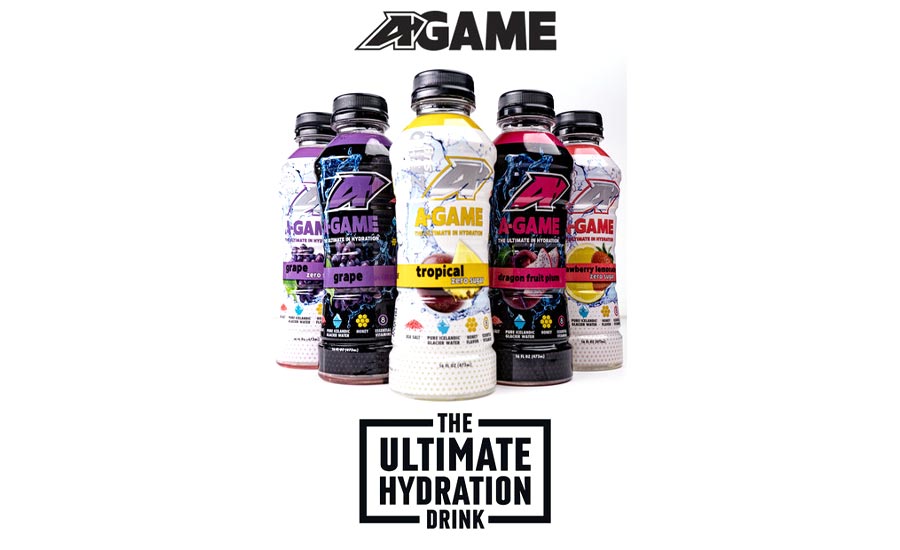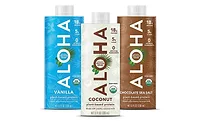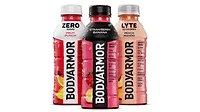Category Focus
Sports and protein drinks must meet in-demand trends
Consumers want variety of functions, flavor for performance beverages

Image courtesy of Getty
In the “Harry Potter” series, young wizard Harry must attend a potions class as part of his curriculum at the Hogwarts School of Witchcraft and Wizardry. Harry and his friends are immediately unsettled by their mysterious potions teacher, Professor Severus Snape. Notable potions include the luck potion, Felix Felicis, and Polyjuice Potion, with each resulting in different — and often dramatic — results when consumed.
In the ordinary, non-magic “Muggle” world, where sports and protein beverages often are consumed for a desired result, increased consumer demand for functional drinks has led to new product innovations, expanding on the category, experts note.
Arielle Rose, senior industry research analyst at New York-based IBISWorld, says that sports and protein drinks — also known as functional beverages — have outperformed nonfunctional beverages in the past year.
“The popularity of functional beverages has exploded in recent years, encouraged by the expansion of functional food and beverages and target marketing,” she notes. “Although many sports drinks had large amounts of calories and sugar, producers have introduced a plethora of new and healthier flavors over the year.”
Adriana Chychula, food, drink and nutrition analyst at Chicago-based Mintel, notes that the sports and performance drink market has witnessed growth over the past year.
“Sports and performance drinks as a whole experienced an 18% increase compared to the year before,” she explains. “Inflation is a part of that number, but it hasn’t deterred purchase as much as we’d expect. In fact, 32% of consumers said they bought more than the year before — more than decreased. This is true, even across the spectrum of financial comfort.”
Sally Lyons Wyatt, executive vice president and practice leader for Circana, Chicago, says that both segments “saw strong dollar growth” over the last 12 months. In Circana’s energy drink subcategory, which includes protein drinks, the market saw an increased unit growth of 5% in the last year. However, sports drinks declined 6%.
Wyatt notes that the sales performance “indicates that the dollar growth of sports drinks is primarily driven by price increases (+20 dollars),” but energy drinks didn’t increase as much. This suggests that the costs, as well as the functional benefits, of these beverages is keeping consumers coming back for more, she says.
IBISWorld’s Rose suggests that consumers with greater amounts of discretionary income tend to buy nonessential goods, such as sports and protein drinks, especially during times of inflation.
“Beverage manufacturers have also been faced [with] rising inflation in the form of higher salaries and soaring costs of inputs,” she says. “Producers must be extremely cautious when raising selling prices, as a fall in sales from price-conscious consumers can severely affect a manufacturer’s profitability.”

Image courtesy of The Coca-Cola Co.
Finding space for fitness, wellness and functionality trends
As consumers have placed move value on fitness and health lifestyles, expert note that consumer demand has put more pressure on beverage companies to expand on product offerings.
“The elevation of fitness lifestyle trends has driven demand for sports and protein drinks higher, both of which are geared toward individuals looking to improve performance and recovery,” IBISWorld’s Rose says. “For example, protein drinks are often consumed to improve muscle growth and recovery, while sports drinks help people replenish their electrolytes, which is especially helpful during strenuous routines.”
Rose adds that consumers also are looking for sports and protein beverages with high-quality ingredients.
“This has encouraged more manufacturers to implement transparent labeling and third-party testing of their products,” she explains. “Also, this elevation of fitness lifestyle consumer trends has contributed to an expansion in fitness-related events, like triathlons and marathons, which often require participants to consume particular products to boost performance and recovery.”
Mintel’s Chychula notes that, because sports and performance drinks are “highly connected to exercise,” which is connected to consumers’ perception of identity, fitness lifestyle trends “naturally feed into” the sports and protein drink market.
Circana’s Wyatt points to elevated fitness lifestyles trends as part of what drives consumers to drink energy drinks. “In fact, our Circana 2023 Snacking Survey found that 35% of consumers drink them for mental wellbeing and 31% for immunity,” she says.
Wyatt adds that, as lines are blurred among beverage categories, it will “continue to put pressure on the industry to differentiate benefits in order to capitalize their current growth trajectory.” Perks include expanding on health and wellness benefits, broader distribution across brick-and-mortar channels and online, she says.
IBISWorld’s Rose says functional and hybrid beverage trends have encouraged producers to innovate and add to their portfolios to capture a broader customer base.
“For example, Talking Rain has introduced a hybrid beverage that offers the traditional hydration feature of a sports drink, while also providing a boost in energy with caffeine,” she explains. “Some producers have even experimented with protein-infused cold brew coffees or teas. Also, some producers have introduced sports and protein drinks with probiotics, collagen and CBD to offer additional benefits.”
Furthermore, Rose expresses that functional and hybrid trends have led to new innovations in flavors, which entice consumers to purchase the beverages.
Mintel’s Chychula echoes sentiments similar to those from Rose and Wyatt.
“Functional and hybrid trends are blurring strict exercise associations and expanding the audience that may otherwise not feel like they are part of the ‘in’ crowd,” she says. “Identity-related connections based around exercise will always be a core feature of the category and propel it forward, but now we’re seeing products stacking functional claims beyond just sports performance that expand relevance.”

Image courtesy of A-Game Beverages Inc.
Tending to other trends
In addition to health and wellness trends, consumers also are turning to more natural and organic products.
Although growth of these type of products in the sports and protein drink segment is small, Circana’s Wyatt suggests that there is room for growth.
“Sports and protein drinks that are 100% natural are small but growing in this segment, indicating room for continued expansion,” she says. “Organic drinks in this segment have not fared well over the past couple years, [and] are also tiny in size.”
IBISWorld’s Rose notes that, while some consumers view sports and protein drinks as unhealthy because of sugar or calorie counts, healthier options have been created, thanks to natural and organic trends. This has also led to a wider consumer base.
She adds that brands like Gatorade and Powerade have introduced sports drinks with low- and no-sugar content.
“Producers have also introduced drinks with no flavor or color artificial additives, or genetically modified organisms (GMOs),” Rose says. “In addition to clean ingredients, producers have also focused on transparent ingredient labeling and ingredient sourcing. Natural and organic trends in the sports and protein markets have also altered pricing strategies, since most ingredients used involve higher costs of production.”
Mintel’s Chychula notes that Mintel has seen increased engagement when it comes to natural sports drink formulations and clean labels, but not as much emphasis is placed on organic. She points out that, while brands are calling out standard ingredients to natural sources, the chemical formulations and ratios haven’t changed. But ingredient names that are familiar and more approachable sit well with consumers.
“Now, what’s really interesting is that consumers have a simultaneous interest in synthetic ingredients designed to give them an edge,” Chychula says. “But this is all about control — consumers want to know what is in their products and have some form of reassurance that they aren’t consuming unwanted contaminants, but also want the stuff that’ll take their results to another level.”
At the same time, she expresses that interest in vegan sports and protein beverages is “still somewhat niche.”
IBISWorld’s Rose says that, while more consumers have become vegan in recent years, most sports drinks are vegan-friendly.
“As for protein drinks, many are produced with whey and other dairy ingredients,” she explains. “The expanding veganism lifestyle among consumers have prompted producers to manufacture plant-based protein drink options, including those derived from rice, hemp, peas and other plant-based ingredients."
Forecasting the future
Going forward, experts suspect that blurring the lines between beverage categories will continue to affect the sports and protein drink market.
Circana’s Wyatt says that companies who “deliver beverages that assist consumers on their journey” will see success, especially those who utilize social and digital media to share their benefits with consumers.
She notes that, within this market, both recovery and meal replacement products are doing well.
Mintel’s Chychula also points to the overlap between products, primarily that of recovery-based protein products and meal replacement products. However, she says, “they target different use cases,” but have room to innovate and share audiences instead of competing.
IBISWorld’s Rose says that the popularity of meal replacement drinks has “surged” in recent years, since they are an ideal option for time-strapped consumers.
“Meanwhile, recovery-based protein drinks are often desirable for those that are very active with working out, including athletes, looking for a drink to help recover, minimize soreness and grow muscle,” she explains. “While recovery-based and meal replacement drink options cater to the varying needs of consumers, meal replacement options steal the show.”
As for what’s next in the segment, Chychula says clean labels, as well as marketing and functionality innovation are what to watch out for.
“The latter will bleed into the general functional beverage innovation designed to optimize the current moment,” she adds. “Brands are leaving the meaning of ‘performance’ up to the user, with functional formulation offerings that target the range of needs.”
Rose says the market will continue to change based on consumer trends — primarily, that of the health-conscious and environmentally-friendly consumer.
“This has led many producers to make products made from ingredients that are simple, minimally processed and easily identifiable and will continue to encourage them to do so,” Rose notes. “This trend, along with the expanding desire for variety, will encourage more producers to experiment with ingredients and formulations.”
Looking for a reprint of this article?
From high-res PDFs to custom plaques, order your copy today!






